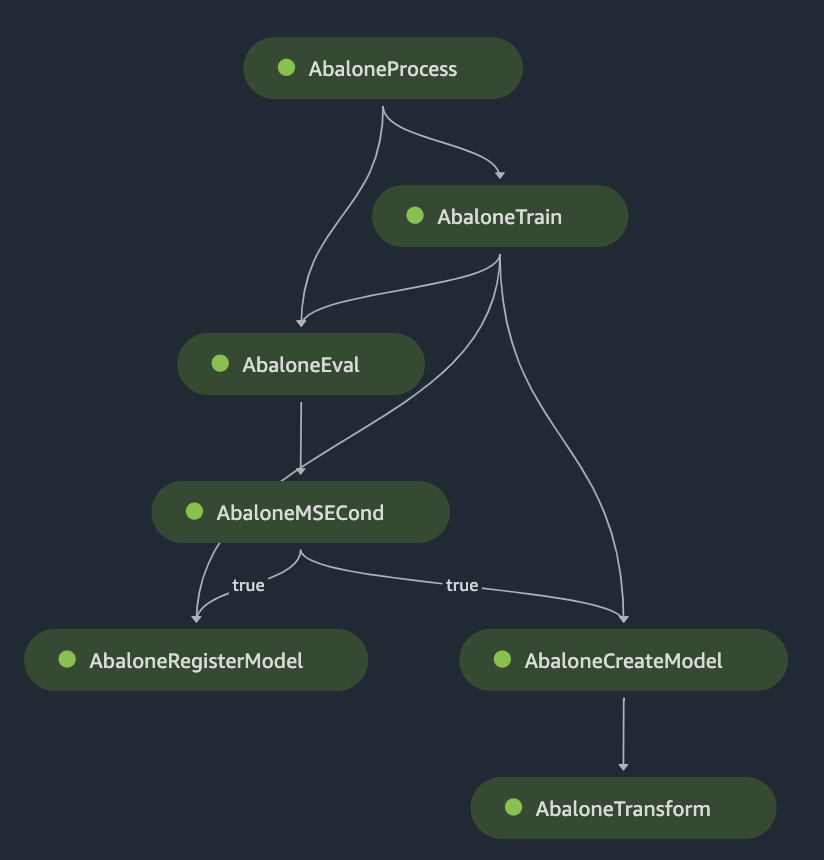Pipelines Overview
An Amazon SageMaker pipeline is a series of interconnected steps in directed acyclic graph (DAG)
that are defined using the drag-and-drop UI or Pipelines
SDK

The example DAG includes the following steps:
AbaloneProcess, an instance of the Processing step, runs a preprocessing script on the data used for training. For example, the script could fill in missing values, normalize numerical data, or split data into the train, validation, and test datasets.AbaloneTrain, an instance of the Training step, configures hyperparameters and trains a model from the preprocessed input data.AbaloneEval, another instance of the Processing step, evaluates the model for accuracy. This step shows an example of a data dependency—this step uses the test dataset output of theAbaloneProcess.AbaloneMSECondis an instance of a Condition step which, in this example, checks to make sure the mean-square-error result of model evaluation is below a certain limit. If the model does not meet the criteria, the pipeline run stops.The pipeline run proceeds with the following steps:
AbaloneRegisterModel, where SageMaker calls a RegisterModel step to register the model as a versioned model package group into the Amazon SageMaker Model Registry.AbaloneCreateModel, where SageMaker calls a CreateModel step to create the model in preparation for batch transform. InAbaloneTransform, SageMaker calls a Transform step to generate model predictions on a dataset you specify.
The following topics describe fundamental Pipelines concepts. For a tutorial describing the implementation of these concepts, see Create and Manage Pipelines.
Topics
- Pipeline Structure and Execution
- IAM Access Management
- Cross-Account Support for Pipelines
- Pipeline Parameters
- Amazon SageMaker Pipelines steps
- Lift-and-shift Python code with the @step decorator
- Pass Data Between Steps
- Caching Pipeline Steps
- Retry Policy for Pipeline Steps
- Selective execution of pipeline steps
- Baseline calculation, drift detection and lifecycle with ClarifyCheck and QualityCheck steps in Amazon SageMaker Pipelines
- Schedule Pipeline Runs
- Amazon SageMaker Experiments Integration
- Local Mode
- Troubleshooting Amazon SageMaker Pipelines